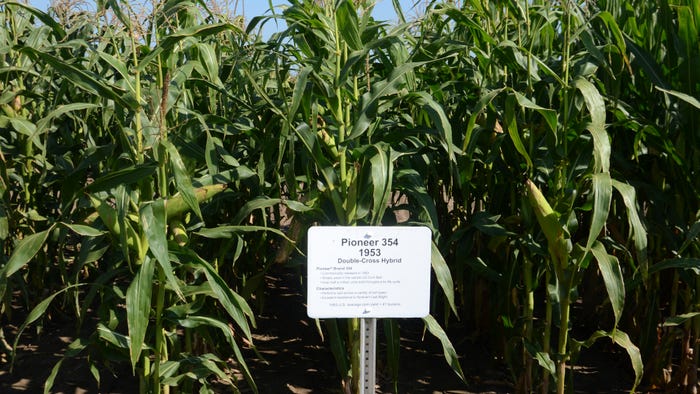
Editor’s note: This is the third article in a series about the history of seed corn. Read on to learn how hybrids finally displaced open-pollinated varieties.
While “tractor wars” raged in the 1920s, with companies competing with each other and the horse, farmers were still growing open-pollinated corn. U.S. corn yields were stuck just above 20 bushels per acre.
However, Mark Jeschke, editor of the 2023 Pioneer Agronomy Research Summary, notes that in “A Brief History of Corn,” Danny Brummel and Lance Gibson explain developments that would eventually lead to commercial hybrid corn. In 1908, George Shull at Cold Spring Harbor Laboratory in New York published a paper explaining that by crossing two pure genetic lines, offspring grew better, yielded more and were more consistent. What he described was heterosis, better known today as hybrid vigor. At the same time, independently, Edward East at Connecticut State College discovered the same thing.
Henry A. Wallace, Johnston, Iowa, graduated from Iowa State College in 1910, fascinated with the new science of genetics. Brummel and Gibson record that after visiting East, Wallace began experimenting with crossing lines on land where Jeschke grows demonstration plots of historic Pioneer hybrids today. In 1923, Wallace’s new hybrid, Copper Cross, a cross between two open-pollinated varieties, Leaming and Bloody Butcher, won the Iowa State Yield Test. Wallace produced the hybrid and sold it to farmers.
Moving hybrid corn forward
Wallace and friends founded Hi-Bred Corn Co., forerunner of Pioneer Hi-Bred, on April 20, 1926. It was devoted solely to producing hybrid seed corn. The “History of Corn” authors note: “No person was more important to commercialization and acceptance of hybrid corn than Henry A. Wallace. He was one of a handful of people in the world who initially recognized the immense potential for significant gains in productivity with hybrid corn.”
So, why did it take another decade before adoption took off? The same restraints that slowed tractor adoption affected hybrid corn. The whole country was gripped by the Great Depression. Hybrids were expensive to produce, farmers weren’t used to buying new seed for corn each year, and drought ravaged Western states.

POPULAR HYBRID: This Pioneer hybrid also enjoyed a long life cycle. Over half a million units were sold. Popularity soared because it worked well across many soil types and locations.
Ironically, it was the performance of Pioneer Hybrid 307 in 1936 that broke the ceiling. Known for good drought tolerance on sandy soils, it outshined open-pollinated varieties during another widespread drought in 1936, doubling corn yields. In Iowa, adoption of hybrid corn went from 6% in 1935 to 50% in 1938 and near 100% in 1942.
Hybrid 307 was a double-cross hybrid. Two sets of inbreds were crossed, and their offspring were crossed. This method yielded more seed, making the whole process less expensive. Unheard of today, 307 would remain in the Pioneer lineup until 1963.
Another milestone double-cross hybrid, Pioneer 354, was released in 1953. Producing big yields and working on many soil types, over half a million units were sold during its lifetime. By 1953, the average U.S. corn yield was 41 bushels per acre, nearly twice the yield in 1935.
About the Author(s)
You May Also Like




